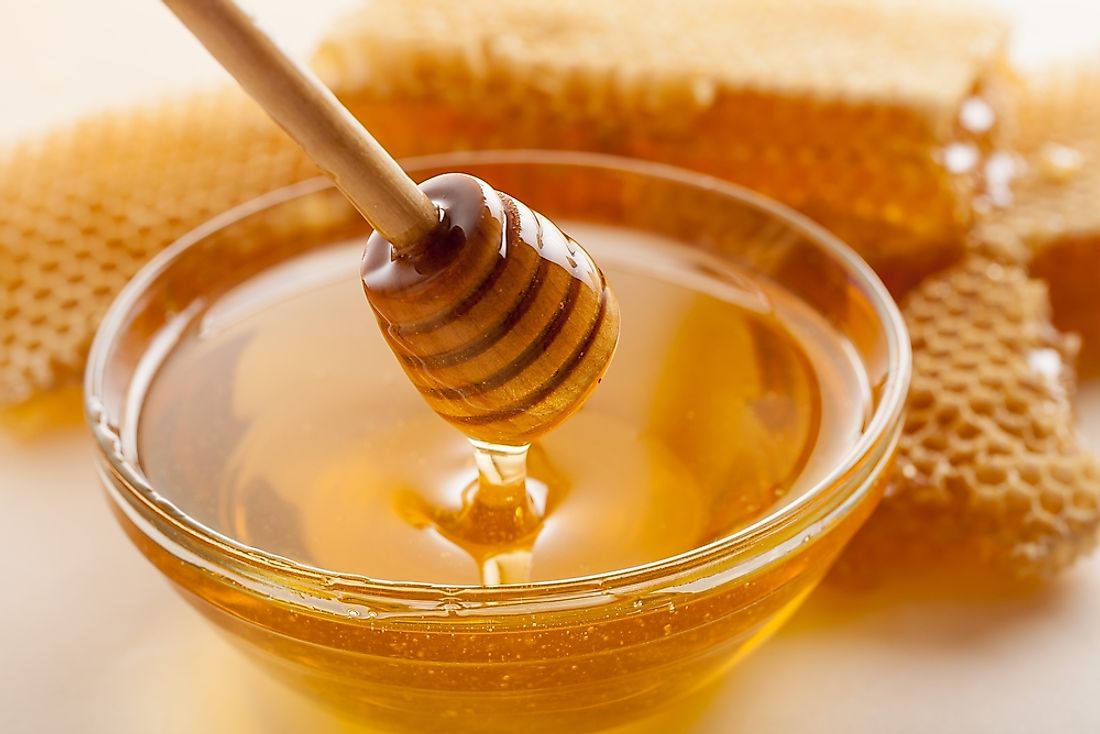How is Honey Made?

What is Honey?
Honey is a sugary substance that is made and stored by specific social insects, mainly hymenopterans. It is produced through the evaporation of water and regurgitation enzymatic activity. Honey that is made by honeybees is popular as it is commercially produced and consumed by humans worldwide.
Production
Honey is first acquired from the nectar of flowers. After derived, nectar is naturally broken down into simple sugars which are eventually stored in honeycombs. A honeycomb is a structure of hexagonal cells of wax that is made by bees to store honey and eggs. As bees flap their wings, evaporation occurs in the honeycombs creating the thick sugary liquid known as honey. The flavor and color of honey differs from hive to hive depending on the type of nectar collected by the bees. For example, flower nectar collected from avocado or wildflowers might produce honey that is dark amber in color whereas nectar collected from orange blossom might produce honey that is light in color. There are over 300 types of honey produced in the US with each originating from a different flower source.
Harvesting and Extracting
Honeybees are known to produce more honey than what is needed for their colonies, making it essential that beekeepers extract excess honey. Each year, an average of 80 pounds of extra honey is produced by a single hive. The liquid is harvested by removing the wax cap on honeycomb frames which contain honey in each cell. Once the removal of wax caps is complete, the next step involves arranging the frames in an extractor. The centrifugal action of the extractor forces the liquid out of the honeycombs. The honey is deposited on the sides of the machine where it is collected.
Straining and Bottling
Once the honey is extracted and collected, it goes through a straining process where extra particles such as wax is removed. Straining honey is easier if the honey is thinner so many beekeepers and bottling companies heat the honey. Heating the liquid does not change its natural composition, it only makes the straining process more efficient. Once the straining process is complete, the honey is ready to be bottled and distributed to retail outlets. If there is a label on the honey that reads "pure honey", it means there were no additives used during production.
Benefits of Honey
Natural honey has no added preservatives, colors or flavors making it beneficial to an individual's health. Raw honey can be used to kill unwanted fungus and bacteria since it naturally contains antiseptic and hydrogen peroxide. Researchers believe that Manuka honey contains additional antibacterial properties besides natural hydrogen peroxide. It is used as an effective germ killer and can help reduce infections in wounds. Honey can be used to sooth sore throats and to treat digestive disorders such as diarrhea or pain caused by peptic ulcers.











